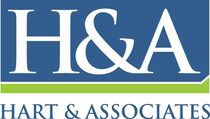Class, tracking codes, and other custom data may need to be added as well. Rules can be set so that the accounting application can pre-code the transactions; in this case the accountant simply approves or corrects the entry.
Invoice Fetching It starts with a picture of a receipt. Invoice fetching applications can turn pixels into data using sophisticated OCR (optical character recognition). The data is then turned into a business transaction that can be imported into an accounting system. Auditing The books of many government agencies, nonprofits, and large businesses need to be audited on a regular basis. Auditing is an expensive process. Smart programs can review a company’s data and assess where the risks and anomalies are so that the audit program can be modified to focus on the more important parts. This reduces risk and cost for everyone involved. Accounts Payable Artificial intelligence can help to speed up the matching of purchase orders, packing slips, and invoices so that accounts payable tasks are streamlined. It can also automate approvals and look for duplicate invoices to avoid overpayments. Accounting Tasks That Are Clerical Robotic Process Automation (RPA) is a platform that allows users to create automation without involving the IT department. Think Excel macros or Zapier on steroids. Any workflow with a mind-numbing set of clerical steps is a candidate for RPA. AI allows accountants to spend less time on routine tasks and more time on higher-level analysis work. As AI becomes more affordable for small businesses, everyone will benefit from this long-term trend. For assistance with incorporating services that support efficient streamlining of accounting and payroll related services, please give us a call.
This is general information and should not be acted upon without first determining its application to your specific situation. Please contact us, your CPA or tax adviser for additional details.
Why pay more for software and services than necessary? Check out our Resources page for information on discounts available to our clients.
Why pay more for software and services than necessary? Check out our Resources page for information on discounts available to our clients.
When you sell an inventory item, the asset is reduced and the Cost of Goods Sold account is increased, moving the item from an asset to an expense. It’s no longer an asset once it’s sold, and the cost of the item sold reduces your profit and is expensed into the Cost of Goods Sold account.
Some accountants will abbreviate the Cost of Goods Sold account to COGS, and you might hear them call it that. In the case of wholesale and retail businesses, the cost of goods sold is the amount that was paid for the inventory items to be sold.
Service businesses will typically not have a balance in the Cost of Goods Sold account. If they do have direct costs, the costs are often coded to a Supplies account under expenses. At any point in time, the cost of items you purchase are in two different accounts:
It’s important that the Cost of Goods Sold balance is accurate, because there are many good things you can learn from it when you compare it with inventory. You can learn how fast your inventory is selling, and you can determine your gross profit margin. If your inventory purchases have not been coded correctly, you can take inventory and arrive at the correct cost of unsold items. If your physical inventory does not match your books, your accountant can make a correcting entry between Cost of Goods Sold and the Inventory account so that both are accurate. If you have further questions about the Cost of Goods Sold account, feel free to reach out any time. And if you are still manually handling inventory tracking, please schedule an appointment to discuss options to more efficiently account for your inventory and COGS.
This is general information and should not be acted upon without first determining its application to your specific situation. Please contact us, your CPA or tax adviser for additional details.
Why pay more for software and services than necessary? Check out our Resources page for information on discounts available to our clients.
The information presented is of a general nature and should not be acted upon without further details and/or professional guidance. For assistance in identifying and utilizing all the tax deductions to which you are entitled, please contact us, your CPA or tax preparer.
Why pay more for software and services than necessary? Check out our Resources page for information on discounts available to our clients.
Next, get your Income Statement for June 2019 Year-to-Date and check the revenue figure. Are you on track with your budget, or are you halfway there revenue-wise, accounting for seasonality? If so, pat yourself on the back! If not, what promotions will you put in place to boost your growth for the rest of 2019?
On Track for Profit Looking at the same Income Statement, check your net income figure. Are you on track with what you planned? If so, great! If not, the reason is simple: it will be either lower sales than expected or higher expenses than expected. If your expenses are too high, you’ll need to drill down into each of your expense accounts, including cost of goods sold, to see which ones are higher than expected. Were there some unanticipated costs? Does your pricing need adjusting? Do you need more volume to cover your costs? This is where we can help you with an analysis of where your opportunities are to increase profit. On Track for Cash One more place to look is your cash balance. It can be uncomfortable when you are running short of cash for your business. If your balance is lower than you’d like it to be, it could be because of some of the factors mentioned above. It could also be because you just purchased an asset like a truck. If you need help with improving your cash flow, that’s another thing we can help you with. Mid-Year Review This mid-year review can help you head off any small problems before they grow into big ones throughout the rest of the year. And it can keep you on track so you can meet your 2019 business goals.
This is general information and should not be acted upon without first determining its application to your specific situation. Please contact us, your CPA or tax adviser for additional details.
Why pay more for software and services than necessary? Check out our Resources page for information on discounts available to our clients.
|
AuthorSuccessfully meeting the challenges inherent to new and smaller businesses provides me with a special type of satisfaction. Archives
February 2022
Categories
All
|






 RSS Feed
RSS Feed







